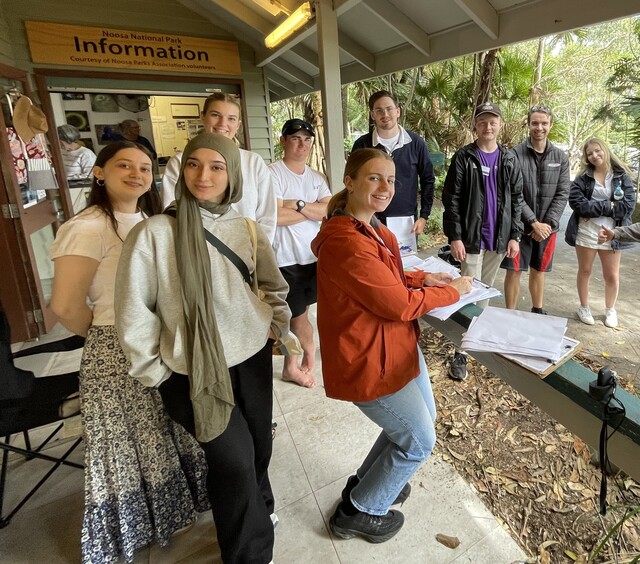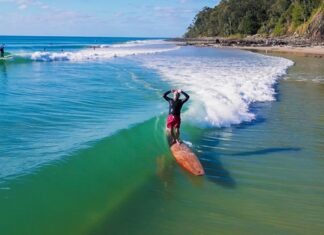Students from the University of Queensland were in Noosa recently to explore the attitudes and practices of residents and tourists around four themes – sustainable transport, community liveability, public safety and tourist mobility and experience. They are second-year undergraduates studying planning and environmental management and their research was core to their Digital Geographies: Geospatial Data and Analysis course.
“A major part of the course is a human spatial behaviour study for Noosa.” Dr Frank Zou, the course coordinator and lecturer in the School of the Environment, explains, “We’ve run this fieldwork-based study for 17 years, with established connections in Noosa, mostly through Tourism Noosa and Noosa National Park.”
Volunteers from Zero Emissions Noosa (ZEN) ran into students in Hastings Street in mid-September as they were conducting observational studies of car, bus, bike and scooter commuters. Following this fortuitous encounter, Dr Zou invited ZEN, together with Noosa Council staff, to the student-led presentations in late October.
The student group focused on transport found that buses were infrequent with delays and cancellations. They witnessed crowding at both the Noosa Heads and Noosa Junction stations with up to 110 commuters waiting at one time.
Car congestion coming into Hastings Street was another observation, with cars taking up to 20 minutes to approach the main roundabout near Lions Park. Cars circulating to find limited parking amplified this congestion. Just under 100 bikes arrived at Hastings Street in the three hours between 9 am and 12 noon on a sunny Sunday, and interestingly 70 per cent of these were electric.
Another part of the study, was a journey-to-work survey of workers around Noosa Beach and Noosa Junction. 83 per cent of about 100 surveyed workers commuted by car and only 9 per cent by bus. The main reasons given for not using public transport was the comfort and privacy of a personal car, the length of time buses take, and the lack of bus services at the times people need to arrive at work on time.
Another group of students explored tourism mobility and experience used survey and anonymised, volunteered GPS logging technology to create heat maps of visitor behaviour in the Noosa National Park. Astoundingly, they recorded up to 600 visitors entering and exiting the park in a 30-minute period on a Sunday morning. Maybe less surprisingly to locals, they found most visitors went out and back on the main Coastal Walk, with fewer taking alternative loops. Their recommendations included an upgrade to facilities to protect the high-traffic zones, and incentives for visitors to explore lesser-known tracks.
Liveability in general was very positive. A student survey found that healthcare, shops, recreation areas and other community facilities were rated as “very easy” or “easy” to access by most people interviewed. Even public transport, while rating less positively, was easy or somewhat easy to access for over half of those surveyed. By mapping the responses against where people lived, the students found however that the ease of access to healthcare and public transport went down the further someone lived from the main coastal section of Noosa Shire.
The fourth and final group of students investigated perceptions of public safety in Noosa. Overall, most people feel safe here during the day, but this perception falls at nighttime. Residents tend to feel safer than tourists because we are familiar with our surroundings and see familiar faces.
We at ZEN want to thank the students for inviting us to their presentations. We hope to continue working with university educators and students on fieldwork and survey design to provide evidence-based recommendations for future transport and community plans in Noosa. If you would like to learn more about ZEN check out zeroemissionsnoosa.com.au or email info@zeroemissionsnoosa.com







